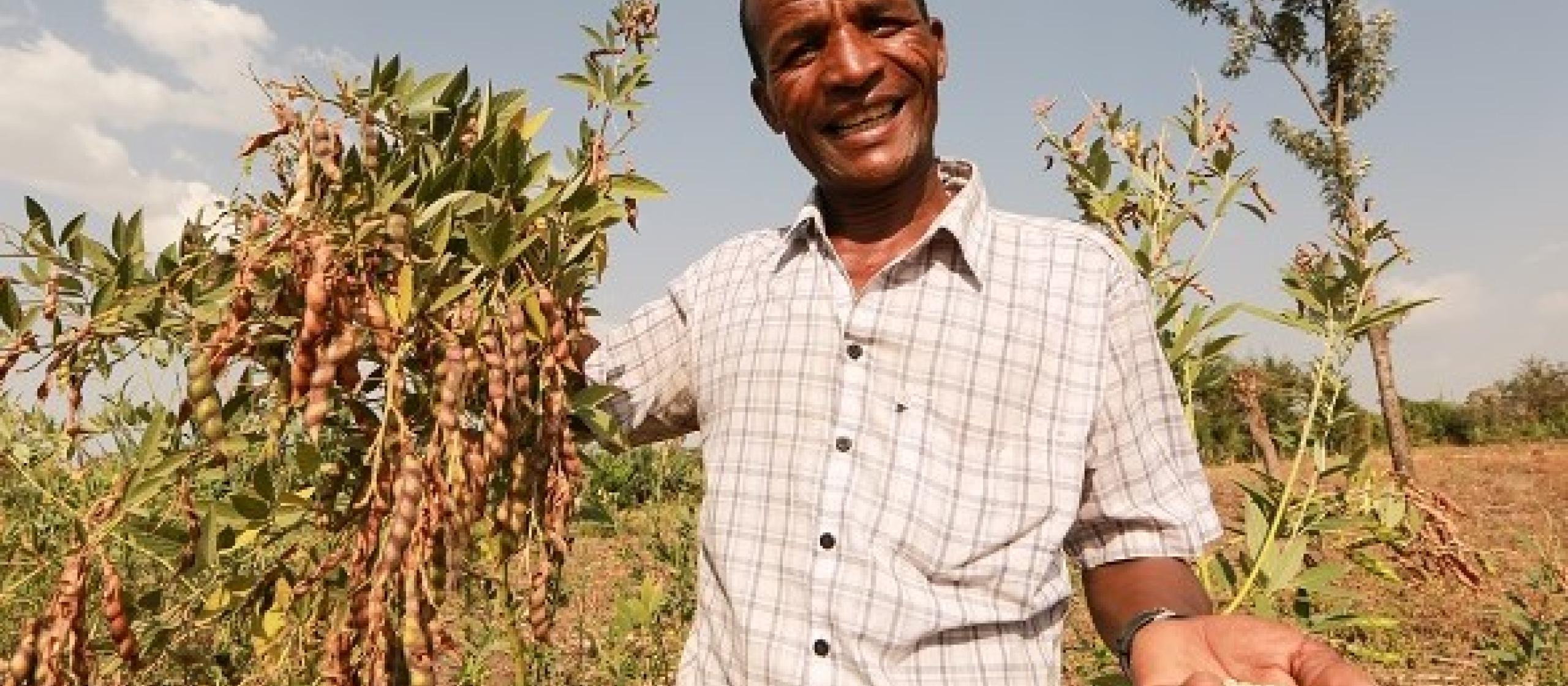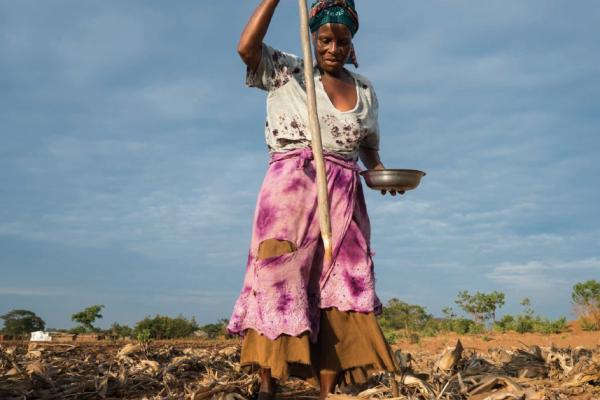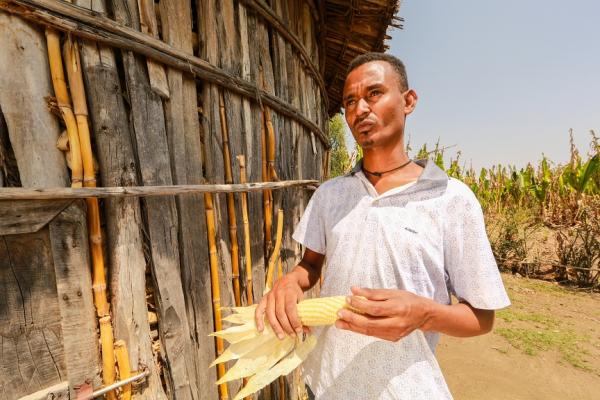- HomeHome
-
About ACIAR
- Our work
- Our people
-
Corporate information
- ACIAR Audit Committee
- Commission for International Agricultural Research
- Policy Advisory Council
- Agency reviews
- Executive remuneration disclosure
- Freedom of information (FOI)
- Gifts and benefits register
- Information publication scheme
- List of new agency files
- Contracts
- Legal services expenditure
- Privacy impact assessment register
- Commonwealth Child Safe Framework
- Benefits to Australia
- Careers
- 40 years of ACIAR
-
What we do
- Programs
- Cross-cutting areas
- Resources
- Where we work
-
Funding
- Research projects
- Fellowships
-
Scholarships
- John Allwright FellowshipScholarships to study in Australia for ACIAR partner country scientists to have Australian postgraduate qualifications
- ACIAR Pacific Agriculture Scholarships and Support and Climate Resilience Program
- Alumni Research Support Facility
- Publications
- News and Outreach
Date released
30 January 2020
Instead of carrying out the back-breaking work of hoeing a field by hand in preparation for sowing, an estimated 484,000 farmers across seven countries in eastern and southern Africa have adopted reduced tillage, cutting their time spent in manual labour by half while increasing farm labour productivity, food production and household income.
These are tangible outcomes of the nine-year, $40 million ‘Sustainable intensification of maize–legume cropping systems for food security in eastern and southern Africa’ (SIMLESA) project that concluded in October 2019.
The wide-ranging project sought to help create more productive, resilient, profitable and sustainable maize–legume farming systems in Ethiopia, Kenya, Malawi, Mozambique, Rwanda, Tanzania and Uganda. It aimed to increase food security and farm incomes and help reverse soil fertility decline, particularly in the context of climate variability and change.
Maize and beans are the staple crops of Africa, providing the main source of carbohydrates and protein, respectively. However, yields are typically low and farmers producing these crops operate in highly variable climates with high rainfall seasonality.
‘They have medium to high levels of climate variability, and they are extremely vulnerable to that variability,’ says Dr Daniel Rodriguez, an Australian contributor to SIMLESA and Professor of Agronomy and Farming Systems, University of Queensland. ‘They are also highly risk-averse because they have very few assets, they are cash constrained and they have very limited or no formal support from central governments or local institutions.’
To help, the project set the ambitious goal of increasing yields by 30% and reducing seasonal downside production risks by 30% for farmers in the target countries. To do this it sought to understand, test, adapt and support the adoption of conservation agriculture-based sustainable intensification practices for maize–legume systems, such as minimum tillage and mulching. It also supported the uptake of improved maize and legume varieties bred to perform well under conservation agriculture management. Combined with work to create enabling extension, research, market and policy environments, the project was highly participatory and involved multiple disciplines and collaborations in a farming systems research approach.
An integrated solution
‘SIMLESA was a complex project, not only because of the complexity of the problem we undertook; it was also complex because we addressed multiple challenges in close collaboration with participating farmers and NARES [national agricultural research and extension systems], in multidisciplinary international teams, chasing system level outcomes,’ says Dr Rodriguez.
‘We need to move away from research for development projects that deal with small problems or single disciplines or commodities. Addressing small disciplinary problems in isolation from other components in the system, and institutional or structural constraints will never achieve large impacts. This has been one of the most important lessons for policy and donors from SIMLESA.
SIMLESA had a team of socio-economists, plant breeders, soil scientists, systems researchers, agronomists, gender specialists and innovation platform scientists. Dr Rodriguez says this created an integrated approach that supported innovation and making connections between farmers, markets and institutions. The approach seems to have paid off.
After successful implementation of the first phase (2010–13), the program was extended for four years (2014–18) to increase the number of people adopting sustainable intensification technologies, which the first phase initiated and tested, and to advocate to government changes that could support adoption. The second phase also covered crop–livestock interactions to deal with some of the trade-offs between cropping and livestock activities in the use of crop stubble.
In 2019, the final year of the project, work focused on consolidating the project’s research, communicating results and capturing lessons learnt. An impressive suite of achievements across research, seed systems, adoption, scaling and capacity-building has been reported.
Forty new maize and 64 new legume varieties have been released, 58 innovation platforms have been established, 65 post-graduate students have been supported, 19 partners have been selected to drive scaling-out initiatives, 57 policy briefs and 135 journal articles have been published, and a regional policy summit has been held.
At the farm level, the results have been positive, too. Over the eight years of the project the adoption of at least two conservation agriculture practices (within a 20km range of SIMLESA sites) increased an average of 3% per year—roughly this means that each year an additional 14,050 new farmers adopted these technologies. The impact of this adoption rates could be related to yield increases of 4-6% per year across the region, which compares to recently reported Australian increases in crop productivity of about 1.2%.
For project leader Dr Paswel Marenya at CIMMYT (the International Maize and Wheat Improvement Centre), these on-farm results are possible only when an integrated approach is taken. The many challenges and obstacles facing African farmers can’t be solved with a single solution or approach, he says.
‘You need the system itself to move,’ says Dr Marenya. ‘And you can’t have systemic change if you only pick one element and run with it, because then you’re blind to the other aspects. So that integrative view of the challenge has been a key factor that has contributed to SIMLESA’s impact.’
The impact of the project on one farmer in particular stays with Dr Marenya: the case of 71-year-old Dailess Kasawaka at Kasungu, Malawi. ‘I like her story so much,’ says Dr Marenya. ‘Without any social security support as would be typical in advanced economies, she adopted new farming practices which she credits for allowing her to stay on her farm and continue farming.’
Mrs Kasawka’s experience is captured along with those of 12 other farmers in the book about SIMLESA’s impact titled Lead Farmers. In it she is cited as saying, ‘Now I harvest even more maize than I did then. I also grow soybean, which I use for making porridge and sell for a good profit to earn money for other household needs. Soybean is a very profitable crop.
‘I also don’t need to do as much heavy work with the hoe—that’s good for me, since in the past farming was a painful job—so I don’t get as tired as I used to and can continue working on my farm. I wouldn’t be able to manage to farm like I do today if I was still using the old methods.’
Reaching policy leaders
Achieving results for farmers and ensuring an enduring system that supports them means affecting change at the policy level, too. As part of the project’s strategy to engage with national leaders and provide policy support, the team coordinated a series of policy events in participating countries.
‘In each country we had a more local policy event at the district level, then later on a policy event at the national level,’ says Dr Marenya. The events involved ministerial-level representatives and director generals of national research institutes discussing SIMLESA’s work and sharing knowledge.
These national meetings culminated in a regional meeting of ministers of agriculture from Burundi, the Republic of the Congo, the Democratic Republic of Congo, Eritrea, Ethiopia, Kenya, Madagascar, Rwanda, South Sudan, Sudan, Tanzania, Uganda, Malawi and Mozambique.
The meeting concluded with the ministers signing the ‘Joint Communique: Repositioning ASARECA for Accelerated African Agricultural Transformation’ in which they agreed on the key principles for conservation agriculture sustainable intensification that came out of SIMLESA. ‘We thought this was an apex achievement,’ says Dr Marenya.
Moreover, there are moves for the communique to be tabled at the African Union. ‘The fact it has reached that level to be nominated for discussion, I think, is an achievement,’ he adds.
Taking lessons forward
One book has already been published as a result of the project ‘Understanding household diversity’, and another is in production. Also, when finalised, the final report from the project will be published on the ACIAR website. In it will be summarised a series of recommendations to build extension services, support community-based groups and learning hubs, foster development of the private sector, support rural market development innovators, and consider farmers’ collective action at various points along the value chain.
‘Farmers need to be linked to markets in a cost effective manner. That’s one lesson,’ Dr Marenya says. ‘If farmers are going to improve their production, they need to see clear incentives for doing so.
‘Also, the successes that we had were linked to the fact extension departments participated in the project. Getting extension systems to really be there for farmers delivering information is very important.’
Other recommendations—identified through broad consultation with NARES and governments— include strengthening research and knowledge management systems of sustainable intensification, supporting effective ways to facilitate social learning, using digital tools, engaging with the private sector and carrying out ongoing capacity building. Both weed management without pesticides and integrating livestock and crop diversification were also identified for inclusion on the future research agenda.
So, while there are more opportunities left to pursue to transform Africa’s crop–livestock farming systems, SIMLESA has already forged some important pathways to impact. From farmers in Malawi in the south to Ethiopia in the north, and to Africa’s leaders, SIMLESA’s reach has been deep and far, demonstrating the value of people working together in an integrated farming systems approach. Dr Marenya sums it up: ‘It is doable—through collaboration, pooling resources and sharing lessons from SIMLESA.’






